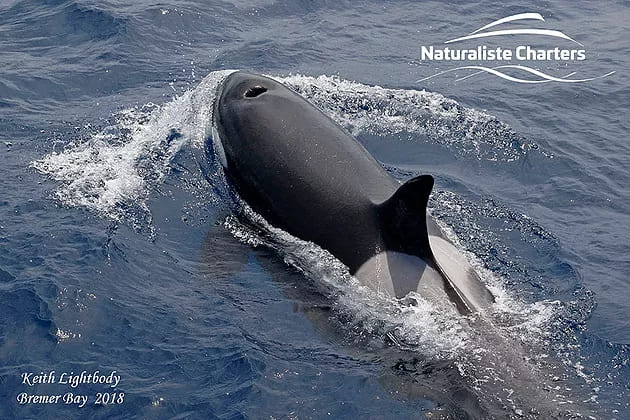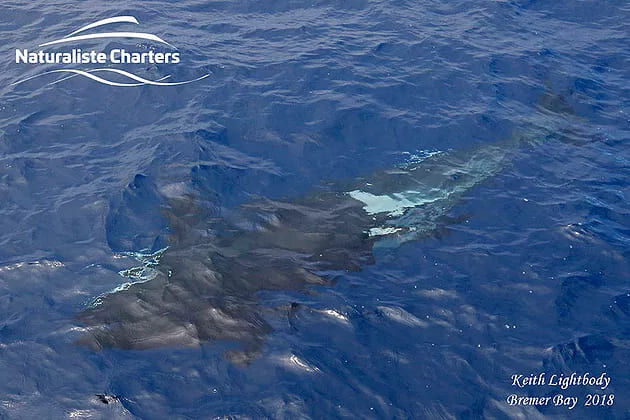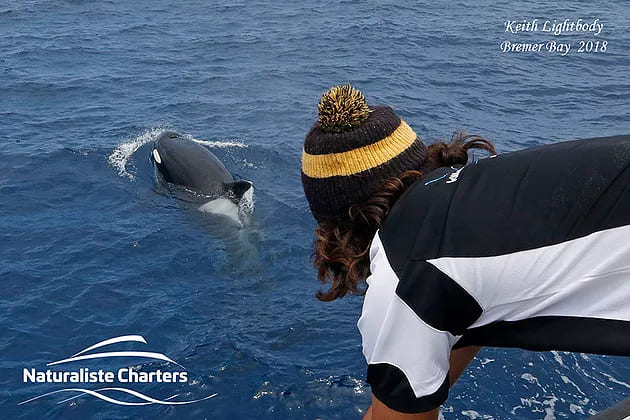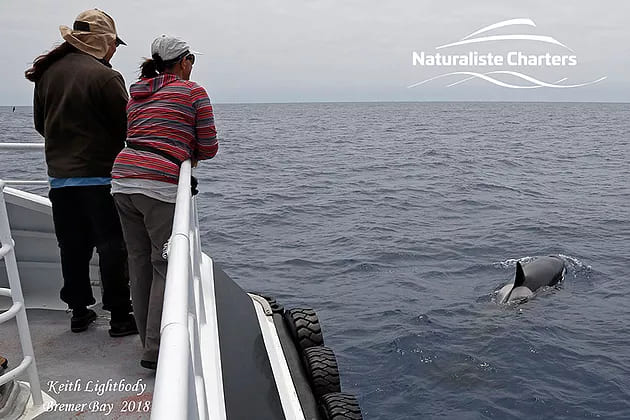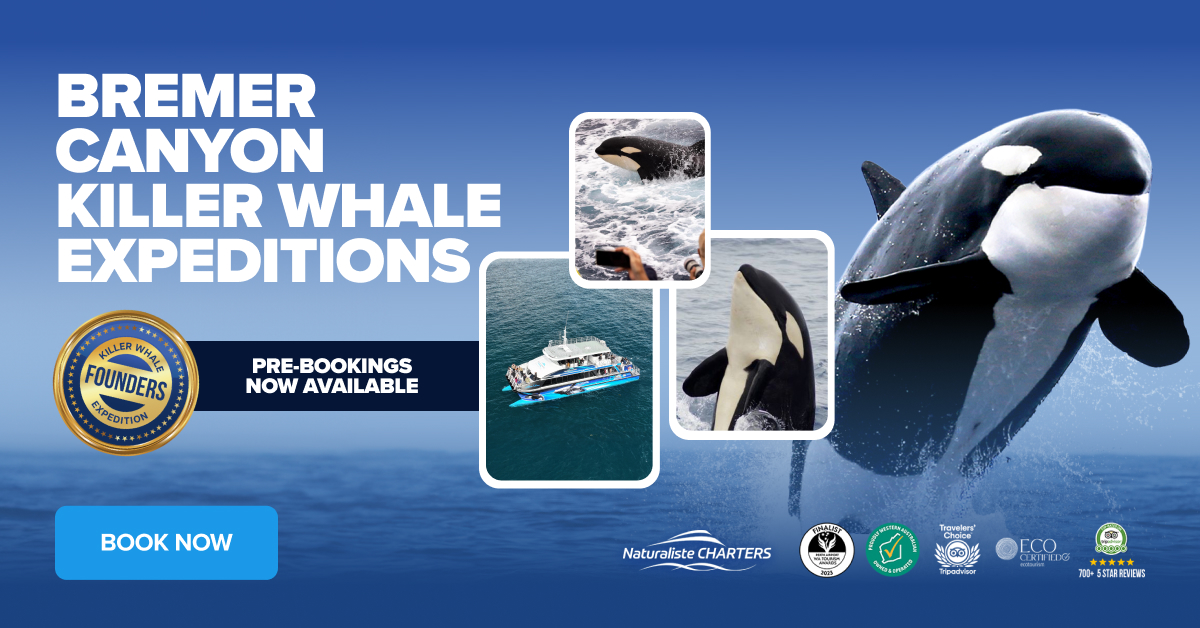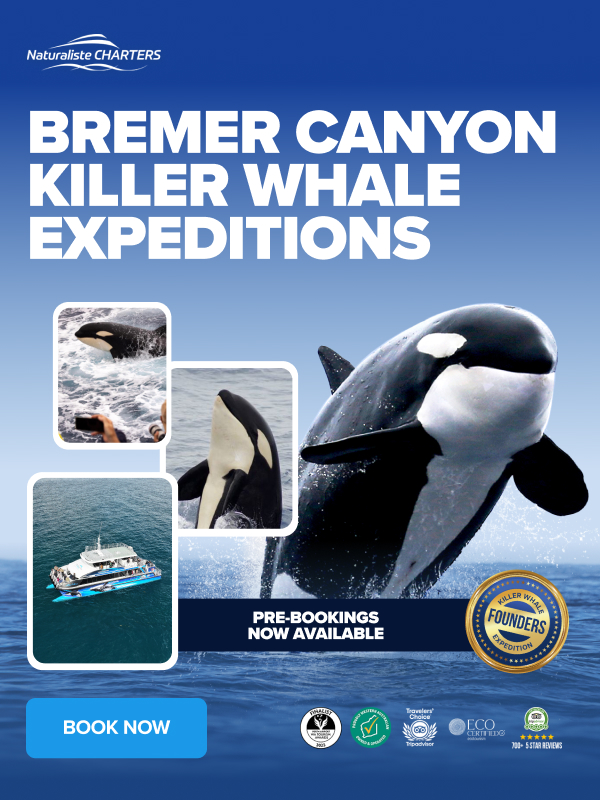Killer Whale Identification
In Bremer Canyon, killer whale identification is more than science—it is personal. Just like humans, each orca has distinctive features. We use photo identification to track individuals based on their dorsal fin, white eyepatch, and saddle patch markings. These become a whale’s “mugshot.” Like fingerprints, they are never the same. On today’s expedition, we used this powerful tool to identify returning pod members, spot new arrivals, and even name individuals. Observing and recording these patterns helps us monitor population health, movements, social bonds, and even possible mating events. In fact, the incredible complexity of killer whale culture was first discovered through ID work in the Northern Hemisphere. Now, Bremer Canyon contributes to that same global understanding. Today, those ID skills were put to the test—and rewarded with familiar fins, surprising behaviours, and the possible discovery of a new pod member in our southern waters.
Photo ID Reveals Swirl, El Notcho and Cookie
As we entered the canyon, sunlight split the clouds, transforming the ocean from slate grey to radiant sapphire. At first, activity was minimal—few seabirds, sparse oil slicks, and scattered baitfish. Then, faint blows rose in the distance. A series of tall dorsal fins followed. A striking male emerged: El Notcho. His trailing-edge notch confirmed his identity instantly. Nearby, Cookie surfaced, her half-moon dorsal fin marking just as distinctive. Our passengers had already memorised these features from the onboard ID talk. Observing killer whale identification in real-time is thrilling. Later in the day, Swirl appeared, travelling alongside a large male we had not catalogued. His impressive triangular fin led us to nickname him “Not-So-Notcho.” These matches and discoveries are recorded in our visual database, where every encounter adds to the collective understanding of this remarkable marine population.
Behaviour and Body Language Tell a Story
Killer whales are masters of mystery. Some days they ignore us entirely—surfacing briefly before disappearing in silence. Other times, they investigate, rolling on their sides to study us. Today, we witnessed both. El Notcho’s group stayed distant and aloof, giving only fleeting glances before moving on. But the patience paid off. Swirl and Not-So-Notcho drew closer, remaining near our vessel for hours. There is still much we do not know about family structures here. But we suspect this pair may have been courting or practising social bonding. Males sometimes leave their mother’s side briefly but tend to stay connected in matriarchal systems. Swirl was the standout—again and again, she approached the vessel directly. She rolled, turned, and locked eyes with passengers along the rail, exhaling just below their feet. This behaviour is rare and powerful—a wild orca, choosing to engage on her terms.
Killer Whale Identification Enhances Research and Respect
Killer whale identification allows us to better understand pod composition, migration routes, and behavioural variation. Over time, these sightings create a population record—tracking returns, changes in markings, and associations between individuals. This long-term data is vital to conservation efforts. Bremer Canyon remains one of Australia’s richest wild orca habitats, and monitoring its residents helps inform management and marine protection strategies. Today’s close encounters also confirmed something we had long suspected—Swirl is female. Video footage and inverted views under the vessel offered the clearest confirmation yet. Every trip offers something new. Our guests were not only witnesses to nature, but contributors to science. This is citizen science at its best—curious eyes, dedicated observation, and unforgettable shared moments. From distant fins to close-up glances, identification reveals personalities, lineages, and the subtle stories unfolding just beneath the waves.
Read about killer whale ID work by the Center for Whale Research.
A Dusky Whaler and a Final Surprise
As the sun began to dip, we spotted a lone fur seal drifting in the indigo water. He bore an open wound—its scarlet trail vivid against the calm sea. As we drifted quietly past, he rolled to face the boat, watching us just as we watched him. We continued on, soon seeing more distant blows. Swirl and Not-So-Notcho had rejoined their pod. Their travel pattern turned focused. Tight turns, sudden dives, and the unmistakable slick of silver oil spread across the surface. They had made a kill. Moments later, a 2.5 metre dusky whaler shark surfaced beside the boat—likely attracted by the scent. Another breathtaking encounter, and another bucket list moment ticked off for repeat guest Darren. From playful orcas to sharks and photo IDs, it was another classic day in the canyon—filled with science, beauty, and the wild freedom of the Southern Ocean.
Visit with Naturaliste Charters Bremer Canyon Killer Whale Expedition and discover who you might meet next.
Until Tomorrow
Our work at Bremer Canyon reminds us: it’s not just what they do, but who they are. And every photo, every ID, and every close approach helps us understand the ocean’s most intelligent predators. Thank you for being part of it.
Until tomorrow,
The Bremer Canyon Crew

